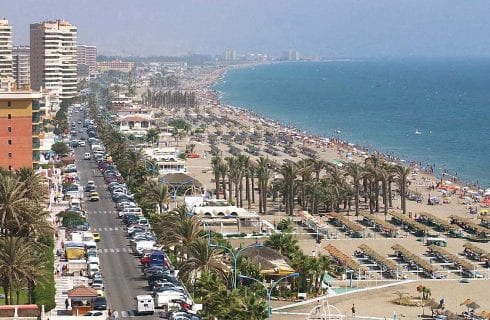AFTER more than six months of being banged up, the Smugglers’ Train is now back on the run.
Running from Algeciras to Bobadilla, the notorious mountain line is Spain’s last to have been electrified.
And for the remote Andalucian villages which rely on the steady flow of tourists brought by the windy route, the line’s return is certainly a welcome relief.
But, despite the track finally being brought into the 21st century, the memories of its shady past are still far from being forgotten.
It all began some 200 years ago, when Gibraltar acted as a portal for precious contraband goods arriving from the UK.
Then, smugglers would attempt to cross the Spanish border, loaded with highly-coveted goods such as tobacco and coffee as well as type writers and fountain pens.
The British officials were happy to look the other way because this was good business for them, and the Spanish guards could be bribed to do the same.
The steam trains which chugged along the windy route reputedly went slow enough for contraband goods to be sold through the coach windows.
The resourceful smugglers used expert pack-dogs to swim from Gibraltar with packages strapped to them to hidden spots around the bay of Algeciras.
There, the smugglers waited to load the precious goods on to mules, and trekked into the mountainous regions surrounding Ronda, where they could easily hide from the Guardia Civil.
However, by the 1890s, the Spanish authorities began cracking down on this illegal practice.
And in 1908, the British government built a fence across the Gibraltar border to prevent smuggling.
Therefore the smugglers, many of whom had no other means of earning a living, had to devise new routes and strategies.
Luckily for them, in 1890, British engineer John Morrison began building a railway line connecting Algeciras and Bobadilla, near Antequera.
With the financial backing of his friend, Sir Alexander Henderson, Morrison devised a quintessentially British railway line in order to open up Andalucia’s mountains to officers living in Gibraltar.
Conveniently for them, he also built a hotel at each end of the line, the Reina Cristina at Algeciras and the Reina Victoria at Ronda.
A welcome resting point for the weary officers and their wives at the end of their journey, both hotels have maintained their British charm and today still serve tourists.
Henderson’s involvement in the train line has spawned a much-loved and well-travelled trek, known as Mr Henderson’s walk.
Starting from the sleepy village Estacion de Benaojan, near Ronda, the ramble takes people on a picturesque three-hour stroll alongside the scenic track.
It ends in the charming Estacion de Jimera de Libar, where hardy travelers can then choose to catch the train back or brave the same track back in the opposite direction.
The eleven stations along the route also clearly bear Morrison’s colonial stamp, complete with English station clocks and wooden canopies.
Morrison opened the first section of the railway from Algeciras to Jimena in 1890, and the second to Ronda in 1892.
While, the train line was originally intended for the use of garrison officers living in Gibraltar the railway soon became home to far more shady practices as it coined the nickname ‘the Smugglers’ Train’.
It emerged as a hot transportation point for black market goods from Gibraltar, destined for the Serrania de Ronda.
The steam trains which chugged along the windy route reputedly went slow enough for contraband goods to be sold through the coach windows.
During this period, many of the smugglers were women, known as matuteras. They were often widows and spinsters, risking their lives just to earn a living.
They lived in fear of being discovered by the brigadilla, the civilian Guardia Civil personnel, who were responsible for cracking down on smuggling.
If caught, they would take the matuteras to the Guardia Civil barracks, and imprison them.
The practice of smuggling even continued throughout the 1900s and during the tough times of the Civil War.
Fortunately, the last 50 years have seen this once popular bandit route quietly assume a more tranquil role.
It now simply offers passengers from Algeciras – and other journeymen coming from the other direction – a safe passage to Ronda, during which they can sit back and enjoy the spectacular views on offer.
Now, with its long-awaited re-opening imminent, these travellers can merely cast their minds back to the cutthroat period these lines were once party to.








